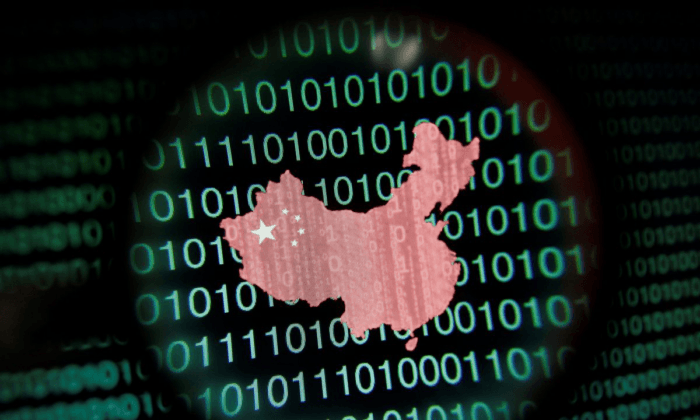Cyber-Espionage Through IoT Standardization in Agriculture
China’s infiltration into agricultural IoT (Internet of Things) networks represents a critical yet underexplored dimension of its global technological strategy. Through key players such as Huawei and Alibaba Cloud, Beijing has embedded IoT technologies into agricultural systems in Latin America, Africa, and Asia. These initiatives, often framed as development partnerships aimed at improving food production and supply chain resilience, concurrently enable the collection of extensive agricultural and environmental data with profound strategic and geopolitical implications.Agricultural IoT systems are revolutionizing farming practices by collecting real-time, high-resolution data on variables such as soil moisture, nutrient levels, weather conditions, pest infestations, irrigation patterns, crop growth rates, and logistical movements. Chinese companies such as Huawei and Alibaba are at the forefront of this technological advancement, designing platforms that support precision agriculture through the integration of advanced sensors, cloud computing, and artificial intelligence (AI) to optimize farm management.
In Kenya, Huawei has actively collaborated with local partners and the Kenya Agricultural and Livestock Research Organization to implement smart farming solutions aimed at enhancing agricultural productivity and sustainability. By deploying IoT sensors that monitor critical agricultural parameters and transmitting these data to cloud platforms where AI algorithms provide actionable insights, farmers have reportedly increased crop yields. These initiatives not only boost local agricultural productivity but also strengthen China’s presence in the region’s agricultural sector.
Similarly, in 2020, the Malaysian government entered into a strategic partnership with Alibaba Cloud to advance its Smart Agriculture Agenda, reflecting a commitment to leveraging digital technologies for agricultural transformation. For instance, in 2019, Malaysian agritech company Regaltech partnered with Alibaba Cloud to develop a smart farming platform for durian plantations. Utilizing Alibaba’s ET Agricultural Brain, an AI-powered platform that analyzes vast amounts of agricultural data, IoT devices and drones monitor crop health, optimize resource usage, and automate farming processes. These systems have shown promising results in improving yield quality and consistency while reducing labor costs through automation.
The strategic implications of this data aggregation are profound. In Argentina—a key supplier of soybeans to China—IOT systems provide granular insights into the production of vital commodities such as soybeans and maize. In 2022, Argentina exported 4.8 million metric tons of soybeans to China, largely for use as animal feed in its burgeoning livestock industry. By analyzing longitudinal data on crop yields, climatic conditions, and supply chain dynamics, Chinese entities can gain the ability to forecast agricultural outputs, identify vulnerabilities to droughts or pest outbreaks, and strategize imports with precision. These insights not only inform economic decisions but also equip Beijing with leverage in trade negotiations with critical partners.
The geopolitical utility of such data is striking. For instance, in sub-Saharan Africa, IoT systems monitoring declining yields of staple crops due to drought could enable China to secure imports before market disruptions occur. In 2022, China’s agricultural machinery market was valued at over $24 billion, with significant exports to African nations incorporating IoT-enabled “smart farming” solutions underpinned by Chinese cloud infrastructure. These systems, while marketed as tools for development, create dependencies that enhance China’s influence. Data access, often governed by opaque agreements, allows Beijing to maintain strategic leverage over countries that adopt these technologies, especially in scenarios involving climate shocks or food crises.
Moreover, agricultural IoT data could be weaponized to manipulate trade dynamics. A pertinent case is Kazakhstan, where Chinese investments in agricultural infrastructure have integrated IoT systems for monitoring key crops such as wheat and soybeans. With precise yield data, Beijing can forecast shortages or surpluses, negotiate trade terms to its advantage, and adjust import strategies accordingly. Historical parallels, such as China’s imposition of tariffs on Australian barley and wine in 2020 following diplomatic tensions, underscore its willingness to leverage trade relationships for geopolitical objectives. While these actions did not involve IoT, they highlight a pattern of exploiting economic dependencies as instruments of influence.
The situation in Pakistan under the China-Pakistan Economic Corridor provides another revealing example. China has introduced advanced irrigation systems and IoT-based crop management technologies to modernize Pakistani agriculture. Although data-sharing agreements remain unclear, the integration of IoT systems grants China a window into wheat and cotton production trends, enabling preemptive adjustments to imports or policy recommendations that align with its broader geopolitical goals. Similarly, in Laos and Cambodia, Chinese IoT technologies embedded in agricultural systems raise concerns about data sovereignty. These systems potentially allow Beijing to identify food security vulnerabilities, influencing domestic policies and reinforcing economic reliance on Chinese infrastructure.
China’s push for global IoT standardization through initiatives such as China Standards 2035 is central to its ambitions in technology and data governance. By embedding proprietary IoT protocols into international frameworks, Beijing ensures that its technologies remain indispensable to global IoT networks. Huawei and ZTE are at the forefront of exporting IoT solutions, particularly to Latin America, where Huawei’s smart agriculture platforms have gained traction. The integration of Chinese-developed encryption technologies ensures compatibility with domestic platforms, consolidating China’s control over these ecosystems and enhancing its capacity to collect and process strategic data.
This influence extends to the control of information flows. Under China’s Data Security Law, companies must share data with state authorities under specific conditions, raising the potential for Beijing to access sensitive information from regions dependent on Chinese technologies. Cross-referencing IoT agricultural data with trade and infrastructure insights could yield comprehensive, multi-layered intelligence on partner nations. Although no concrete evidence has emerged to confirm systematic exploitation of IoT data, such capabilities align with China’s data-driven strategy to extend its influence globally.
The cybersecurity risks associated with agricultural IoT also warrant attention. The 2021 cyberattack on Brazil’s JBS Foods, which disrupted global supply chains for weeks, illustrates the vulnerabilities inherent in digitized agricultural systems. If IoT networks established by Chinese companies were similarly targeted, recovery efforts could be hindered by Beijing’s potential control over critical data, complicating mitigation and policy responses. Such scenarios highlight the dual-use nature of IoT technologies as tools for both development and strategic leverage.
Advanced Biometric Surveillance and Behavioral Data Exploitation
Complementing its cyber-espionage activities in agriculture, China has significantly advanced its capabilities in biometric surveillance and behavioral data exploitation. This represents a critical axis of its global digital strategy, intertwining technological innovation with its broader geopolitical ambitions. State-backed enterprises such as Hikvision and Dahua, alongside AI pioneers such as SenseTime and Megvii, have spearheaded the development of technologies that extend far beyond traditional facial recognition. Innovations such as gait recognition, voiceprint identification, and emotion detection systems enable unprecedented behavioral monitoring, offering granular insights that elevate surveillance capabilities to new levels.By 2023, Chinese firms had exported biometric surveillance systems to more than 80 countries across Africa, South Asia, Latin America, and Eastern Europe. For instance, the Safe City initiative in Kenya, involving approximately 1,800 Hikvision cameras integrated into centralized police monitoring networks in Nairobi, underscores the depth of Chinese involvement. Similarly, in Lahore, Pakistan, Huawei’s surveillance infrastructure merges biometric data with urban management systems under the aegis of the China-Pakistan Economic Corridor. Beyond hardware installations, Chinese firms embed proprietary software ecosystems and advanced machine learning algorithms into these projects, consolidating control over data pipelines and fostering dependencies on Chinese-managed platforms.
The implications of these systems extend well beyond surface-level monitoring. In Zimbabwe, Chinese surveillance cameras equipped with AI analytics have reportedly been deployed to profile political dissidents. In Serbia, a Chinese-developed Safe City system sparked controversy when facial recognition technology was used to track anti-government protesters. These deployments often come with opaque licensing agreements, debt-financed installations, and extensive service contracts, creating long-term technological and financial dependencies.
Chinese biometric surveillance technologies have achieved levels of precision previously considered theoretical. For example, Watrix, a global leader in gait recognition, claims its systems can identify individuals with 96 percent accuracy from distances exceeding 50 meters, even in crowded environments or when faces are obscured. Such technologies have been deployed in sensitive regions such as Xinjiang, where authorities use them to monitor the Uyghur population and flag “abnormal behavior.” Meanwhile, in Shanghai, hospitals employ gait recognition systems to restrict unauthorized access, highlighting the technology’s versatility across both security and civilian applications.
Emotion recognition, another frontier in Chinese AI, adds further depth to the surveillance arsenal. By analyzing micro-expressions, vocal intonations, and physiological cues, these systems can infer emotional states, with applications ranging from education to law enforcement. For example, in Hangzhou’s Smart Schools initiative, cameras reportedly monitor students’ emotions to optimize classroom management—a practice raising ethical concerns about privacy and mental health. In Xinjiang, similar systems are allegedly employed to evaluate detainees’ stress levels during interrogations. These tools serve China’s broader strategy of “stability maintenance,” embedding surveillance into everyday life to ensure societal control.
Domestically, biometric surveillance underpins China’s Social Credit System, which fuses big data analytics with behavior monitoring to regulate individual and corporate conduct. In cities such as Shenzhen, facial recognition cameras identify jaywalkers, publicly displaying their images to shame violators. Some systems go further, sending offenders text messages and linking penalties to their social accounts. While the system’s broader claims—such as restricting access to education or healthcare—remain contentious, its documented impacts include travel restrictions. By 2018, millions of citizens with low social credit scores were barred from purchasing airline and high-speed rail tickets, illustrating how the system enforces compliance through access limitations.
Internationally, the export of Chinese surveillance technology poses profound risks, especially in nations with weak regulatory frameworks. These countries effectively import not just the hardware but also a governance model that facilitates authoritarian practices. In Uganda, Huawei’s $126 million CCTV system, ostensibly designed for crime prevention in Kampala, has been criticized for its use in monitoring opposition figures. In Ethiopia, allegations of misuse have been compounded by reports of data breaches linked to Chinese-built infrastructure, such as the African Union headquarters. These examples illustrate the dual vulnerabilities of technological dependency and political exploitation.
Integration of Strategies and Global Implications
China’s strategic integration of cyber-espionage in agricultural IoT networks and the global export of advanced biometric surveillance systems is more than a pursuit of technological advancement—it is a deliberate effort to reshape geopolitical influence through digital means. By embedding its technology into the critical infrastructures of emerging economies, Beijing gains unparalleled access to vast datasets that serve both economic and political objectives.One emerging scenario is the potential intersection of these datasets in influencing food aid decisions during political unrest. Agricultural IoT systems could identify regions at risk of famine, while biometric data profiles assess local populations to gauge levels of dissent or compliance. By aligning aid distribution with behavioral trends, China could selectively stabilize or destabilize regions to further its strategic goals, deepening reliance on its technological and economic infrastructure.
Through proprietary standards and AI-driven insights, China is embedding global dependencies that not only reduce partner nations’ autonomy but also enhance Beijing’s ability to shape international norms. This data-driven approach cements China’s influence in a new era of geopolitical power defined by digital dependencies.




